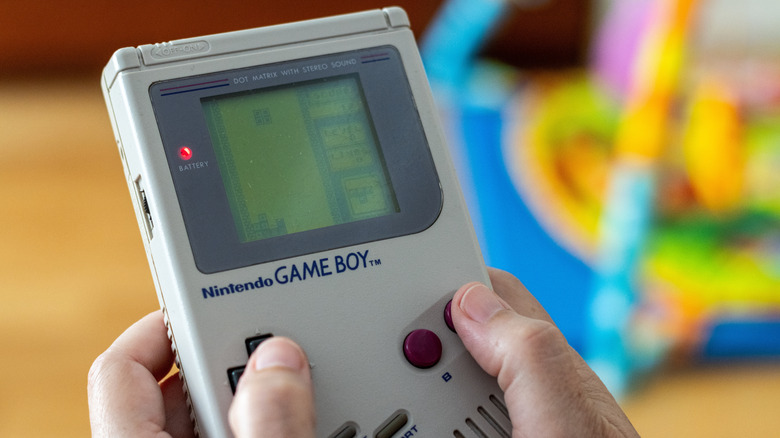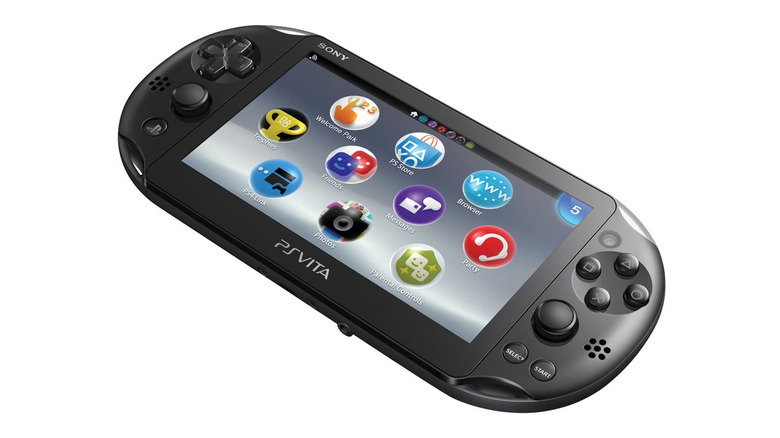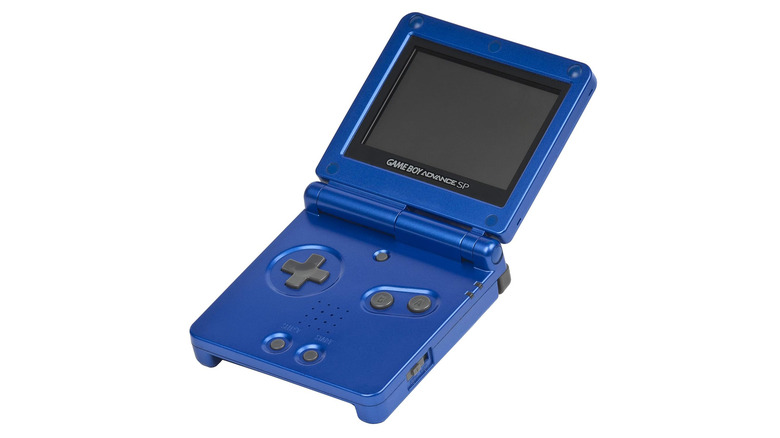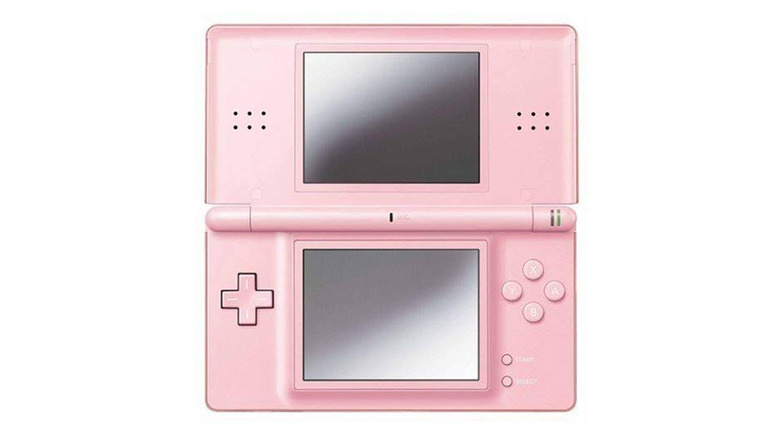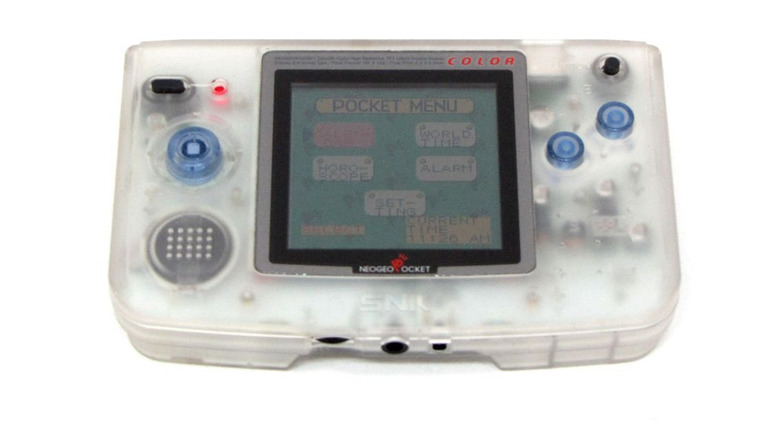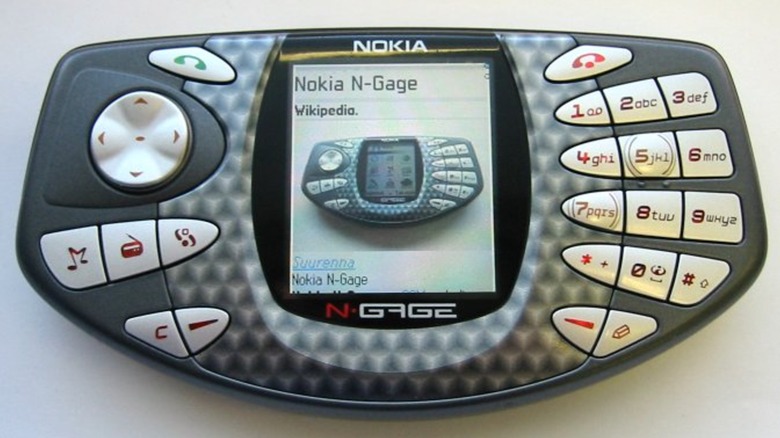5 Discontinued Handheld Gaming Consoles That Deserve A Modern Interpretation
We may receive a commission on purchases made from links.
Handheld gaming is hotter than ever right now. With devices like the Steam Deck, ROG Ally, and powerful gaming phones stealing the spotlight, it's safe to say portable gaming is having a glow-up moment. However, a lot of what's popular today is really just a modern remix of ideas that have been floating for years ago.
Back in the day, companies really took some wild swings with handheld consoles. Some of them stuck, some flopped, and a few of them were just way too early for their time — many of those discontinued devices had genuinely smart ideas that deserve a second chance in today's market. Especially now that portable gaming isn't just a side hustle, but the main event for a lot of gamers. So in the spirit of pixel-powered nostalgia, let's look at five discontinued handheld gaming consoles that truly deserve a modern comeback. No, not just for the sake of retro vibes, but because their concepts still make total sense in 2025 and beyond, provided they get a bit of that modern tweaking.
PlayStation Vita
Let's just say it: the PlayStation Vita was done dirty. Sony's sleek, forward-thinking handheld deserved way more love than it ever got. It was a stunner, with a slim, lightweight design and a gorgeous OLED screen that still holds up today. It featured dual analog sticks, a rear touchpad, modern connectivity options, and a UI that felt ahead of its time. On paper, it should've been the handheld to beat.
Unfortunately, Sony left it to rot. After an initial push, first-party support dried up, and major studios never fully backed it like they did the PSP. But the Vita always had the right hardware. It was built for digital games, cloud gaming, Remote Play, and indie hits. And that's exactly why it deserves a comeback. Picture a modern Vita with stronger internals, native PS5 Remote Play, and access to a robust digital library. Add haptics and a better app ecosystem, and we're looking at a serious Steam Deck competitor, only thinner and sexier.
Sure, the PlayStation Portal exists, but that's purely a PS5 accessory for Remote Play. A next-gen Vita would stand on its own as a true handheld console, capable of running digital games locally and potentially even hosting its own line of exclusive titles. And before anyone says, "Why not the PSP," well, we loved it, but one stick and games on UMDs won't fly today. Modernize it, and you've basically made a Vita. So let's just give Vita the respect it deserves.
Game Boy Advance SP
If one handheld nailed the balance of form and function, it was the Game Boy Advance SP. That clamshell design was iconic, and flipping it open felt like booting up something special. The backlit screen was a revelation, and the introduction of rechargeable batteries to Nintendo's handhelds, finally freed us from the AA battery curse. The Game Boy Advance also had a legendary game library, packed with some of the best pixel-art RPGs of the early 2000s. This was 32-bit magic in your pocket, without feeling bloated or overcomplicated.
Imagine the GBA SP reborn today. A sharper HD screen, USB-C charging, built-in wireless multiplayer, and a digital store filled with retro classics and indie gems? Keep the flip design, make it slimmer, toss in Bluetooth for wireless audio, and bam: nostalgia meets practicality. Not to forget that form factor is still a winner. It slips into your jeans pocket with ease and survives drops like a champ. In a world obsessed with portability, this design just makes sense.
The SP deserves a modern reboot, not just for nostalgia's sake, but because the core idea still holds up. And let's be honest, if Nintendo doesn't want players turning to emulators, it might as well give us a legit way to replay Golden Sun or Fire Emblem with HD sprites and save states. Bring it back, and we're lining up on day one.
Nintendo DS Lite
The Nintendo DS Lite made the DS cool. It took the bulky, toy-like original and gave it a sleek, Apple-esque glow-up. Its slimmer profile, brighter screens, and better battery life just felt right. But the real magic was in the dual screens, one of which was touch-enabled. This was Nintendo at its most experimental, and somehow, it worked beautifully. It brought a wave of unique games that only made sense on that setup. And honestly, there hasn't been anything quite like it since.
So, what would a modern DS Lite even look like? Honestly, not much needs to change. Give it sharper, possibly OLED screens, a slightly more compact build, USB-C charging, and eShop access to classic DS/3DS games and modern indies built for dual screens. Bring back stylus support, and there's serious potential for creative apps or casual drawing games too.
Now we know some folks would opt to emulate it on their phones, but let's be real, it's not the same. The DS's layout is crucial to the experience. Holding a true dual-screen handheld just hits different. Sure, Nintendo followed up with the 3DS, but no one's pining for that 3D slider. Instead, a modernized DS Lite could bring back all the charm and creativity of Nintendo's golden handheld era, just without the gimmicks. And in a time when everything handheld is a Switch port, a unique take on that kind of innovation would be a breath of fresh air.
Neo Geo Pocket Color
The Neo Geo Pocket Color might not be a household name like the others on this list, but among retro fighting game fans, it's cult royalty. This little handheld featured one of the most satisfying, clicky thumbsticks ever made, and delivered surprisingly smooth 2D gameplay in a compact, no-nonsense form factor. It played host to mini versions of King of Fighters, Samurai Shodown, and Fatal Fury, and honestly, they performed way better than you'd expect from something this small. The visuals were clean, controls were sharp, and the build quality was also seriously underrated. This thing could survive drops that would wreck most other handhelds.
What would a modern Neo Geo Pocket Color look like? It wouldn't try to run Cyberpunk 2077, that's for sure. Instead, it could double down on retro-style arcade titles, pixel art, and tight fighting mechanics. Think of it as a spiritual successor to the Analogue Pocket, but made specifically for SNK's library. Keep the classic layout, bring back that glorious micro-switched joystick, and toss in a small touchscreen, customizable skins, and native support for retro downloads.
It probably wouldn't appeal to everyone, but for gamers raised on arcade cabinets and pixel-perfect timing, it could be a dream device. And with retro-style games back in the mainstream, a modern Neo Geo Pocket Color would definitely perform well.
Nokia N-Gage
Think what you like, but the Nokia N-Gage was seriously onto something. It was a phone and a gaming console, all the way back in 2003. Sure, the taco-shaped design and the fact that swapping out games required removing the battery were weird, but beneath all that awkwardness was a concept that makes more sense today than it ever did back then.
Think about it. We're already gaming on our phones nonstop, and there are dedicated gaming phones like the ASUS ROG Phone and Nubia RedMagic. However, most of them stop at high refresh rates and virtual triggers. That's why the N-Gage's original idea still shines. Imagine a modern-day version with a powerful mobile chipset, proper cooling, physical controls with built-in triggers, and a big battery for long gaming hours. Put in a custom Android OS skin with a gaming-first UI, and suddenly you've got a handheld that feels like an actual console, not just a phone with accessories slapped on.
It's giving the Sony Xperia Play 2 vibes, and if outfitted with an OLED panel and a silicon-carbon battery, they could keep the device thin and practical. Of course, it wouldn't replace your console, but it could totally replace the clunky setup most mobile gamers deal with. So yeah, ditch the taco form factor, but keep the spirit of the N-Gage alive. Because in today's world, a hybrid that blends console power with smartphone smarts definitely sounds like the next big thing.
